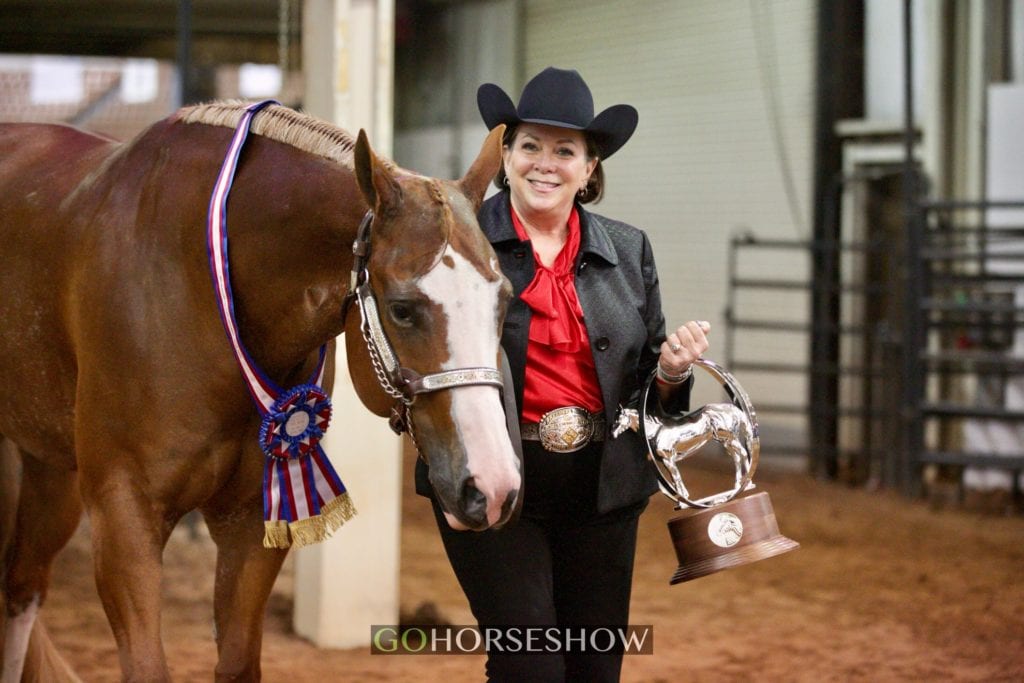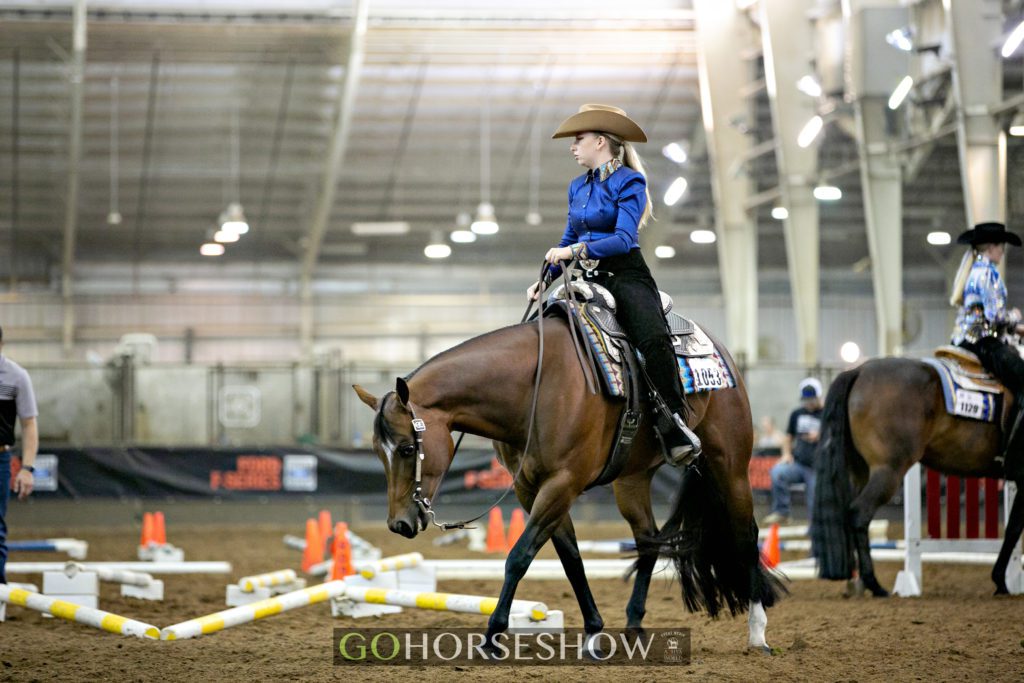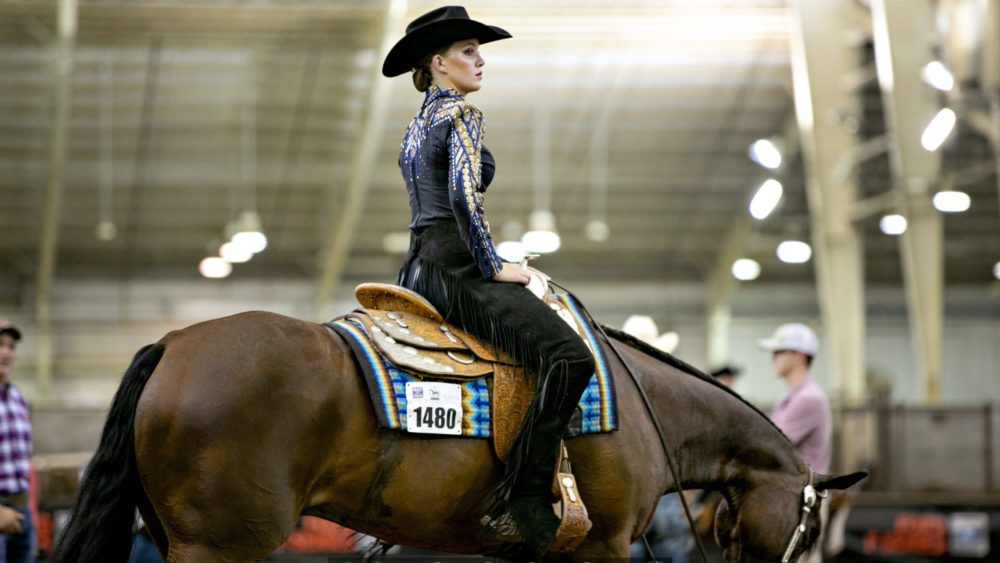It’s that time of year again. After the cancellation of last year’s show due to COVID-19, thousands of trainers and exhibitors all across the country are preparing to attend the 2021 All American Quarter Horse Congress.
As the pinnacle event of the year for many AQHA competitors, a trip to “The Congress” is not just a regular show, but something that is a culmination of a year’s worth of hard work and dedication.
While competing at a show such as the Congress is certainly rewarding in many aspects, it does not come without its challenges. Anyone who has ever attended the Congress knows to be prepared for late nights, early mornings, unpredictable weather, huge classes, and intense competition.
While preparing to attend a show of this caliber, exhibitors will undoubtedly be asking themselves: how can I be sure to make my presence known in the show ring? What can I do to ensure that I don’t get lost among the crowd?
GoHorseShow asked top AQHA Judge Andrea Simons, as well as Congress Champion exhibitor Ashley Hadlock, to provide their advice to exhibitors on how they can “catch the judge’s eye” at this year’s Congress.
Look (so You’ll Feel) Your Best
 The importance of a clean and well-thought-out appearance is key – particularly in exhibitor-based classes such as showmanship, horsemanship, and equitation.
The importance of a clean and well-thought-out appearance is key – particularly in exhibitor-based classes such as showmanship, horsemanship, and equitation.
Ashley Hadlock, who won the Amateur Showmanship at the Congress in 2017, advises not to overlook the small details when it comes to your appearance. “Overall, always be sure that your clothes are clean, the hat is shaped appropriately, and your tack is clean, as well as your horse,” she states.
Complimentary colors and styles are also important for creating a “look” to catch the judge’s eye.
“There are a lot of different styles and trends with clothes that aren’t for everyone, so do what fits you and your horse the best – whether it be the color of the outfit or something such as the cut of a jacket or vest,” Hadlock advises. “Then, once it is all put together, you and your horse will look great.”
While many believe that an expensive outfit will automatically cause the judges to notice, Hadlock insists that spending money on a brand new outfit just for the Congress isn’t necessary for success. “You don’t have to have the fanciest clothes or tack,” she insists. “What you do need to be sure of is that it all fits appropriately, both on you and the horse.”
If a new outfit isn’t on the docket, make sure the one you have is clean, tailored, ironed, and ready to go. Adding a new pair of earrings or a tie in a complementary color are details that can be added less expensively and will help give you that little extra boost of confidence when entering the show pen.
Believe in Yourself
Multi-carded judge and trainer Andrea Simons, who judged the Congress in 2017, notes that confidence is a key to catching the judge’s attention. “The most important thing in the pattern classes, aside from the obvious clean equipment and hat and boots and well-fitting attire, is confidence. It really separates competitors more than most people realize.”
 In the weeks leading up to the Congress, an excellent way to gain a boost of confidence in yourself and your horse is to spend an extra ten minutes at the end of each practice session pushing past your comfort zone (such as working on your extended trot in showmanship, posting without irons, or loping without stirrups). This will ensure that you are ready for the rigors at a challenging show like the Congress. An exhibitor who knows that they’ve put in the extra work to post without irons or drop their stirrups, and can do so with ease, will exude that confidence from the very first cone.
In the weeks leading up to the Congress, an excellent way to gain a boost of confidence in yourself and your horse is to spend an extra ten minutes at the end of each practice session pushing past your comfort zone (such as working on your extended trot in showmanship, posting without irons, or loping without stirrups). This will ensure that you are ready for the rigors at a challenging show like the Congress. An exhibitor who knows that they’ve put in the extra work to post without irons or drop their stirrups, and can do so with ease, will exude that confidence from the very first cone.
Make a Good First Impression
Hadlock agrees that confidence is an element that can set an exhibitor apart from their competition – and setting a good first impression is an excellent way to show the judge that you are confident in your ability to nail the pattern.
Hadlock advises that a good initial impression is significant in large classes like the ones at the Congress. “The first impression sets the bar for the exhibitor. You want to be standing there waiting confidently, ready to go when the judges turn and see you. If you look unsure of yourself, the judges will have that impression as well. You need to be ready to sell the pattern you have practiced and show to the best of your ability.”
Final Thoughts
 Both Simons and Hadlock cannot emphasize enough the importance of time spent outside the pen preparing and forming the connection between yourself and your horse when it comes to catching the judge’s attention.
Both Simons and Hadlock cannot emphasize enough the importance of time spent outside the pen preparing and forming the connection between yourself and your horse when it comes to catching the judge’s attention.
“There is a definite advantage for exhibitors who are well prepared, practiced, and connected to their horse,” notes Simons. “This, of course, comes with time spent perfecting each event that you show in. There is no shortcut to achieving this. As a judge, this makes a competitor stand out from the others.”
Hadlock adds, “Everyone has strengths and weaknesses in every pattern. From your practice at home, you as the exhibitor know what those strengths and weaknesses are. Use that to your advantage. The areas that you are strong in, show it off and earn pluses,” she says. “Those weaker areas – know that it’s better to score a zero on that particular part rather than get minuses. Then, as you are showing each part to the best of your ability, sell it!”







